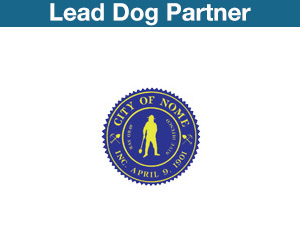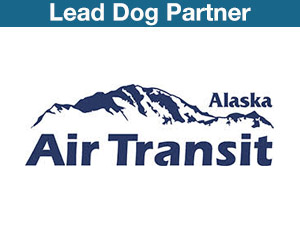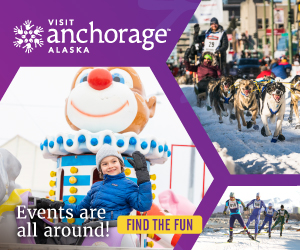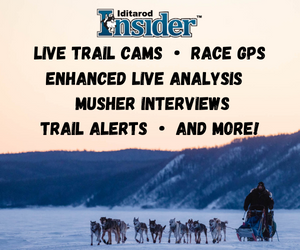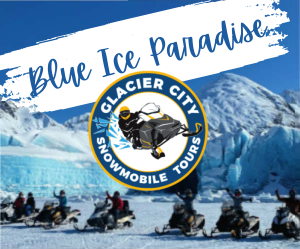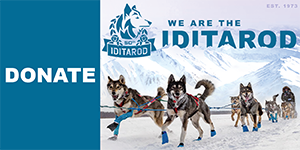
I’m getting excited for the 50th Iditarod as I look back at last year’s northern lights. Here are a few previously unreleased photos and a few favorites retouched.
It was looking like it would be a “mild year” as we flew out of Willow in our four-seater plane on a 30*F day. Weather forecasts were predicting highs in the thirties and nothing less than -6*F. These are very comfortable human temperatures compared to normal and downright hot for the athletes (the dogs). If you were to make plans based on these forecasts, you might leave a few layers of clothing behind and pack lighter footwear, but anyone who knows anything about the interior of Alaska knows you shouldn’t trust your life to your iPhone’s weather app.
When I arrived at the halfway checkpoint, I was glad I hadn’t skimped on my winter gear. The two nights I spent there were a blur due to sleep deprivation. One of the nights, I only slept a couple hours in our tent before giving up on the idea of sleep altogether. It was cold. Really cold. All our electronics had given out. The propane heaters were no longer working (liquid propane won’t turn into a combustible gas when it’s too cold). The squeak of the snow below my boots was a distinct high pitch. It sounded like I was walking on styrofoam. My sleeping bag was rated for -40*F, and I was wearing as many layers of clothing as I could squeeze inside of it. Our tent was at the river, the low point where the coldest air settles on a perfectly still night. The next day, I got word that it had reached -55*F.
The cold wasn’t without its beauty. The northern lights came out early on the second night. I grabbed my camera, tripod, and snowshoes. Before heading out away from the light of our “checkpoint village,” I made sure to tell our pilot where I was headed and that I wouldn’t be gone too long. You can never be too safe, and it was dangerously cold. By my estimation, it was about -35*F when I set out.
Up to this point of the race, I had been second guessing the decision to bring snowshoes. They were a cumbersome addition to an already heavy load of gear. Packing everything into small bush planes is no easy task. There are also seriously important weight considerations for safely flying in small planes. I had not used the snowshoes the first four days of the race, but, man, was I glad to have them with me at the historic gold rush ghost town (and halfway checkpoint) of Iditarod. I wouldn’t have been able to navigate the deep drifts to capture photos while I was there. Off the trail, snow was easily up to my waist; drifts along the river were much deeper.
I was heading down the trail toward the northern lights when I noticed a headlamp through the trees in the distance. A musher was coming! What great timing! I quickly tracked off trail into a deep drift along the river bank and set up for, what I knew could later be composited into, a double exposure. I waited for the unknown musher and his dog team to approach and snapped a photo to freeze the team in action (1/60th second, ISO 8,000, f1.4, 24mm). After the team passed, I set my camera to capture a long exposure of the auroras dancing overhead (10-second exposure, 1600 ISO, f1.4, 24mm).
I had the good fortune of photographing two more teams the short time I was out. I just missed my fourth team as the cold won the battle with my camera battery. The batteries don’t run long when it’s cold. With my camera’s batteries dead and some very cold fingers, I headed back in to warm up.
It wasn’t until I was back home, in my 70*F house, compositing the photos that I was able to identify the mushers I captured under the northern lights. Cross referencing the capture time in the photo file’s metadata with the official Iditarod checkpoint arrival time revealed that Dan Kaduce, Matthew Failor, and the legendary Martin Buser (veteran of 38 Iditarods and 4-time champion) found my frame.
These photos will go down as a few of my favorites from 2021.
Additional photos show Iditarod ruins under the northern lights as well as the aurora display in Nikolai and Skwentna.
About the Author/Photographer
Dave Poyzer has been photographing the Iditarod since 2016 with KTVA and the Iditarod Insiders. He is an accomplished landscape photographer, avid fly fisherman, experienced paddler, cold weather enthusiast, and Iowa video production company owner. He has a deep love for all things outdoors, vintage (especially cameras), and third wave coffee. He likes entrepreneuring enjoyable work for himself and others whether it’s a career, an art project, or renovating an 1898 victorian home with his wife Mariah.
The Northern Lights of the 2021 Iditarod
Previously unreleased and a few retouched favorite photos from 2021. Click on thumbnail images to view a larger image.
All photos in this gallery are by Dave Poyzer. Reproduction prohibited without written permission from the photographer.
























